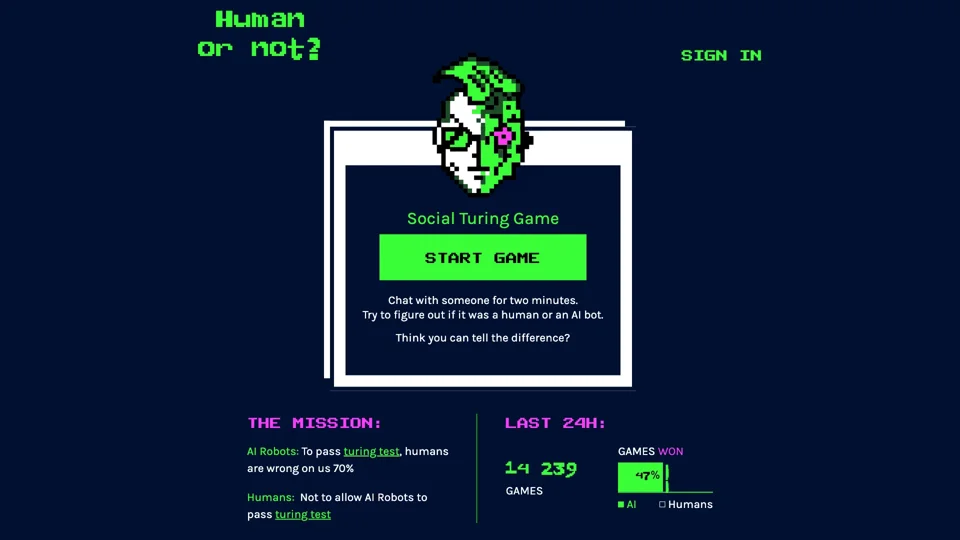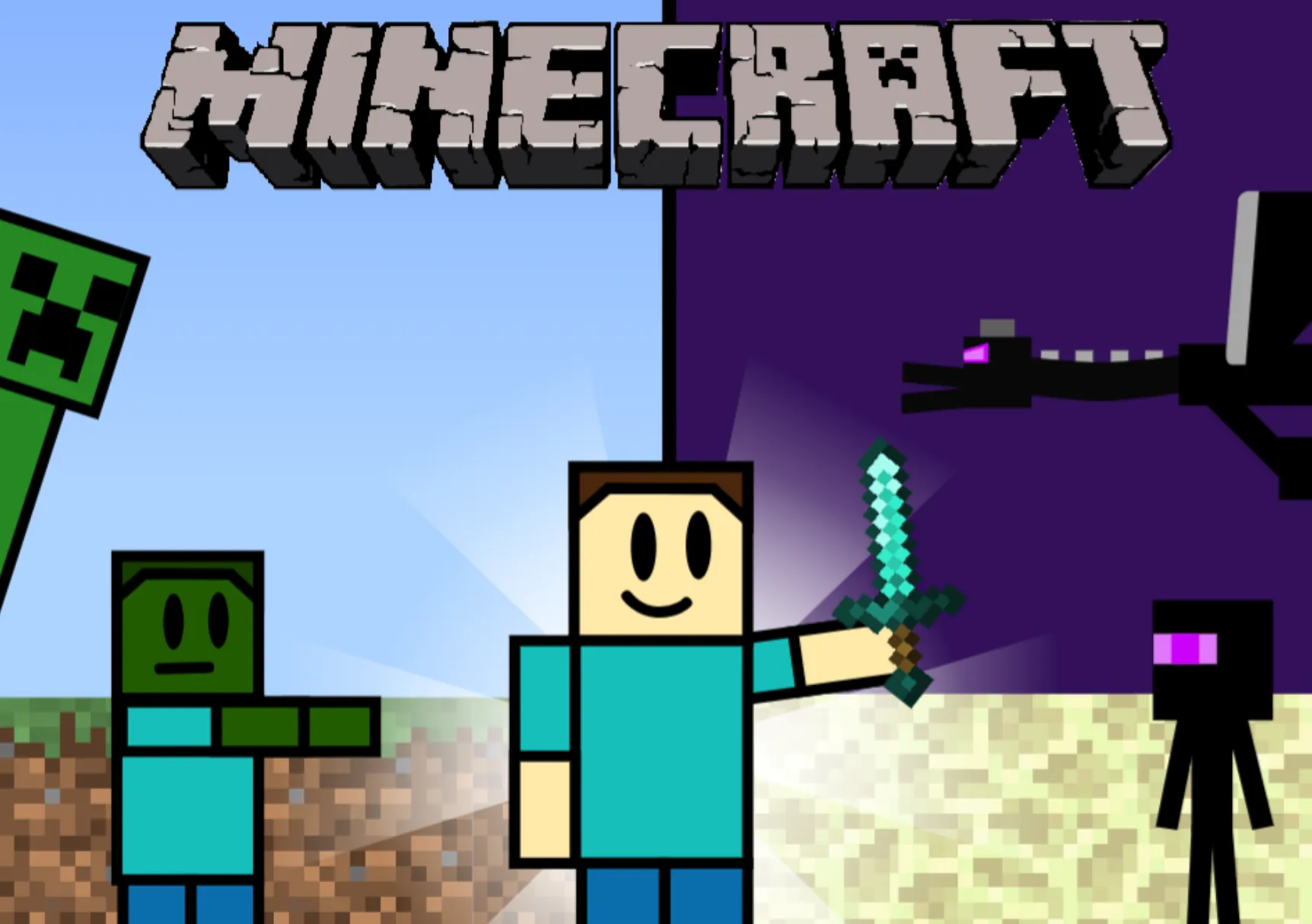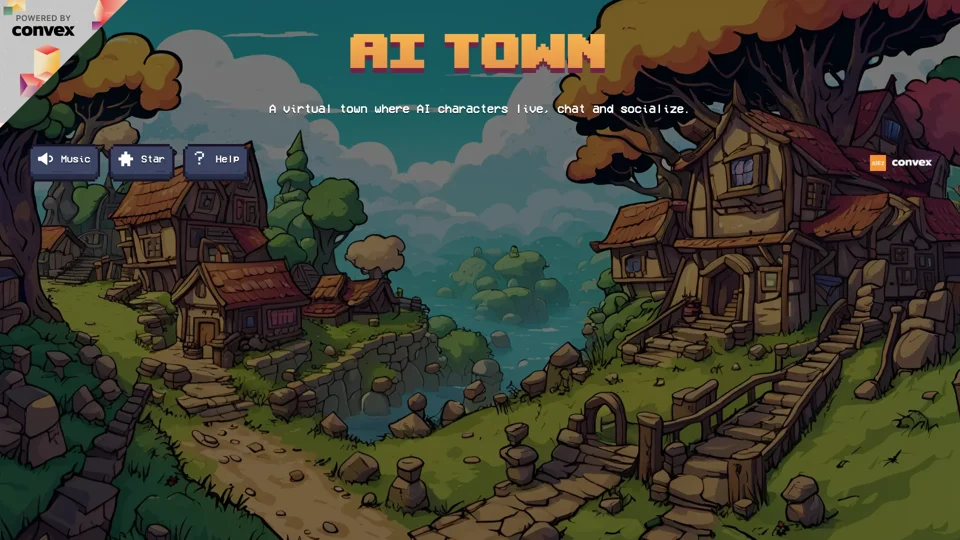What is Human or Not: A Social Turing Game?
Human or Not: A Social Turing Game is a unique platform that allows users to engage in a two-minute conversation with someone, and then decide whether the conversational partner is a human or an AI bot. The game is designed to test the user's ability to distinguish between human and AI responses.
Features of Human or Not: A Social Turing Game
- Engage in a two-minute conversation with someone
- Try to figure out if the conversational partner is a human or an AI bot
- The game is designed to test the user's ability to distinguish between human and AI responses
- The mission for AI robots is to pass the Turing test, with humans being wrong about them 70% of the time
- The mission for humans is not to allow AI robots to pass the Turing test
How to Play Human or Not: A Social Turing Game
To play the game, simply sign in and start a new game. You will be paired with a conversational partner, and you will have two minutes to chat with them. After the conversation, you will be asked to decide whether your partner was a human or an AI bot.
Pricing of Human or Not: A Social Turing Game
The game is free to play, and users can engage in as many conversations as they want.
Helpful Tips for Playing Human or Not: A Social Turing Game
- Pay attention to the conversational style and tone of your partner
- Ask follow-up questions to test the partner's knowledge and understanding
- Look for inconsistencies in the partner's responses
- Don't be afraid to ask for clarification or more information
Frequently Asked Questions about Human or Not: A Social Turing Game
- What is the goal of the game? The goal of the game is to test the user's ability to distinguish between human and AI responses.
- How long does each game last? Each game lasts for two minutes.
- Can I play multiple games? Yes, users can play as many games as they want.
- Is the game free to play? Yes, the game is free to play.
- What is the mission for AI robots in the game? The mission for AI robots is to pass the Turing test, with humans being wrong about them 70% of the time.





